Lecture 27 - Programs for Movement


Required Reading : Chapter 7 - Simmons and Young
Recommended Reading :
Wilson, D.M. (1961) The central nervous control of flight in a locust. J.exp.Biol. 38:4471-490

How can a pattern of movements be organised such that the appropriate motion always takes place at the correct time in a cycle? Imagine designing a robotic cat which has to be able to walk from one place to another. How would you design your robot so that it has an appropriate pattern of leg movements?
Solutions to the problem
proprioceptor reflexes
One solution would be to place sensory receptors at each of the
joints involved in the motion and wire them such that when each
leg reaches a particular position it send a signal to the next
leg to begin its movement. This way the pattern is maintained
peripherally, without central control.
central pattern generator
Another solution involves having a central pattern generator which
produces the correct rhythm in the absence of sensory input. This
rhythm can then be used to drive the motor pattern. The central
pattern generator could be as simple as a single pacemaker cell,
which spontaneously fires in a fixed rhythm. Another possible
central pattern generator involves connecting several cells into
a circuit that produces a pattern of activity as a result of the
interaction between the individual cells.
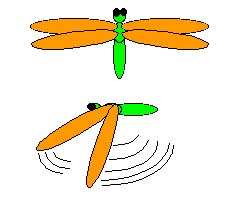
The locust, like many other insects, has two pairs of wings. Movement of the wings is controlled by 3 groups of muscles. These muscles have very simple innervation, with only one or two motor neurons responsible for the movements of a single muscle.
So how are these movements coordinated to produce flight?
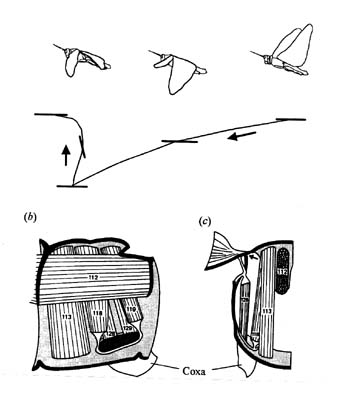
A locust (low-cost?) solution to a locust problem
The flight rhythm in locusts is produced by a central pattern generator (Wilson, 1961). This central pattern generator is found in thoracic ganglia and consists of over 100 interneurons which fire in flight rhythm. This rhythm can be elicited in a tethered locust by directing wind over its head (fictive flight). Interneurons involved in the central pattern generator are able to re-set the flight rhythm (phase re-setting), such that changing the timing of firing of one interneuron will change the timing of the whole central pattern generator.
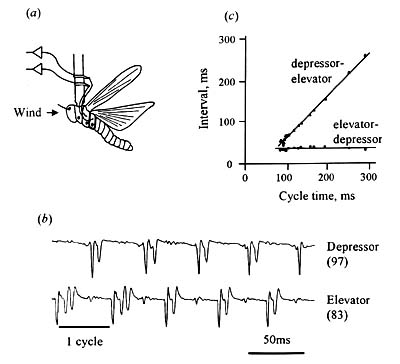
Two interneurons that have been found to be involved in the central pattern generator are int 301 & int 501. The recording pictured below shows how int 501 fires in time with the rhythm of wing elevation and depression, and also how re-setting the firing of int 501 has a similar effect on the timing of the flight muscles.
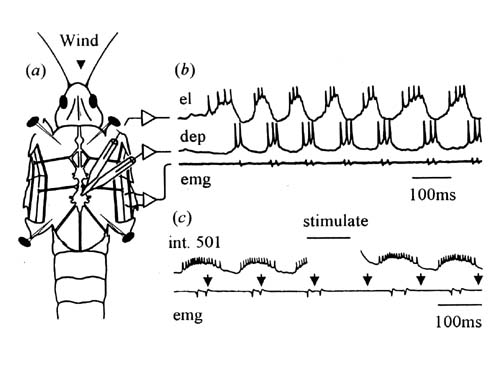
The figure below shows the pattern of connectivity between int 301 and int 501. An excitation in int 301 (top trace in (b) and (c)) is followed by an excitation in int 501 after a brief delay. Excitation of int 501 (bottom trace in (b) and (c)) is quickly followed by inhibition in int 301.
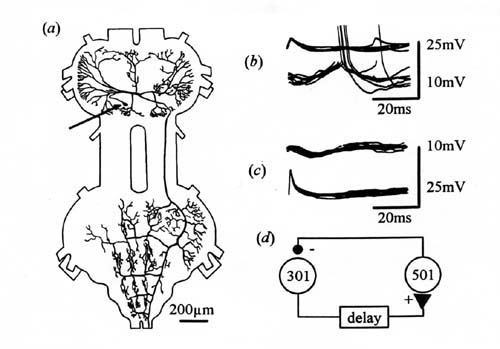
This pattern of connectivity suggests a possible oscillator circuit.
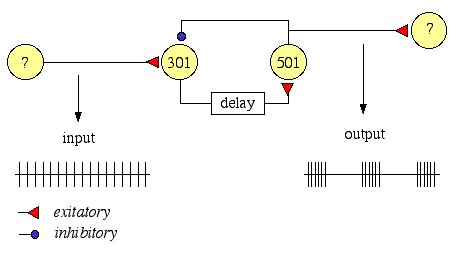
This circuit assumes that int 301 is tonically excited by an unknown neuron. Int 301 then causes excitation in int 501 (after a delay), which produces a burst of spikes. However, excitation of int 501 feeds back onto int 301 with inhibition, which silences int 301 and so causes the excitation of int 501 to cease. Once the inhibition of int 301 has decayed the tonic excitation causes int 301 to resume firing, which excites int 501 again, and the cycle continues.
However, a third interneuron is known to act upon int 501, and in turn to be acted upon by int 301. Int 511 is tonically active, but this activity is inhibited by int 301. Int 511 is also known to inhibit int 501. Given the involvement of int 511, a closer approximation of the oscillator circuit is depicted below.
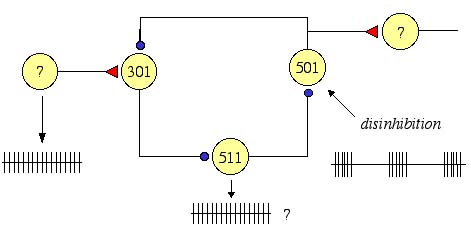
In this circuit diagram the delay between firing of int 301 and the firing of int 501 is explained by the position of int 511. The only way inhibition of int 511 could lead to an excitation of int 501 would be if int 511 is continuously inhibiting int 501. When int 301 fires, int 511 is inhibited, silencing its tonic inhibition of int 501. If the membrane potential of int 501 is set to a level that this disinhibition is sufficient to raise the membrane potential above threshold we will see a rebound spike in int 501. Int 501 then inhibits int 301, which allows int 511 to resume its inhibition of int 501, and the cycle continues.
These are not the only interneurons involved in the central pattern generator, but they do provide an excellent example of an oscillatory circuit of neurons.
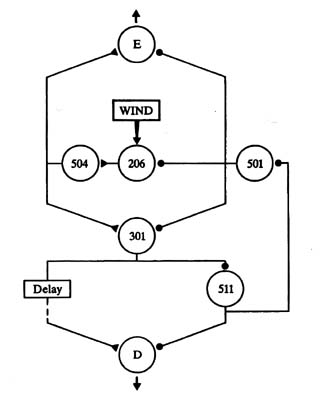
This diagram includes the wind-sensitive interneuron int 206, which receives input from hairs in the head of the locust. Int 206 excites int 504, which in turn excites the elevator muscles directly and the depressor muscles (after a delay) via int 301. This fixed delay underlies the fixed delay between upwards and downwards strokes of the wings. Int 301 also excites int 501 via int 511, and int 501 inhibits both the elevator muscles and the wind-sensitive response from int 206.